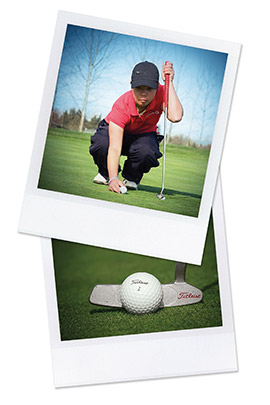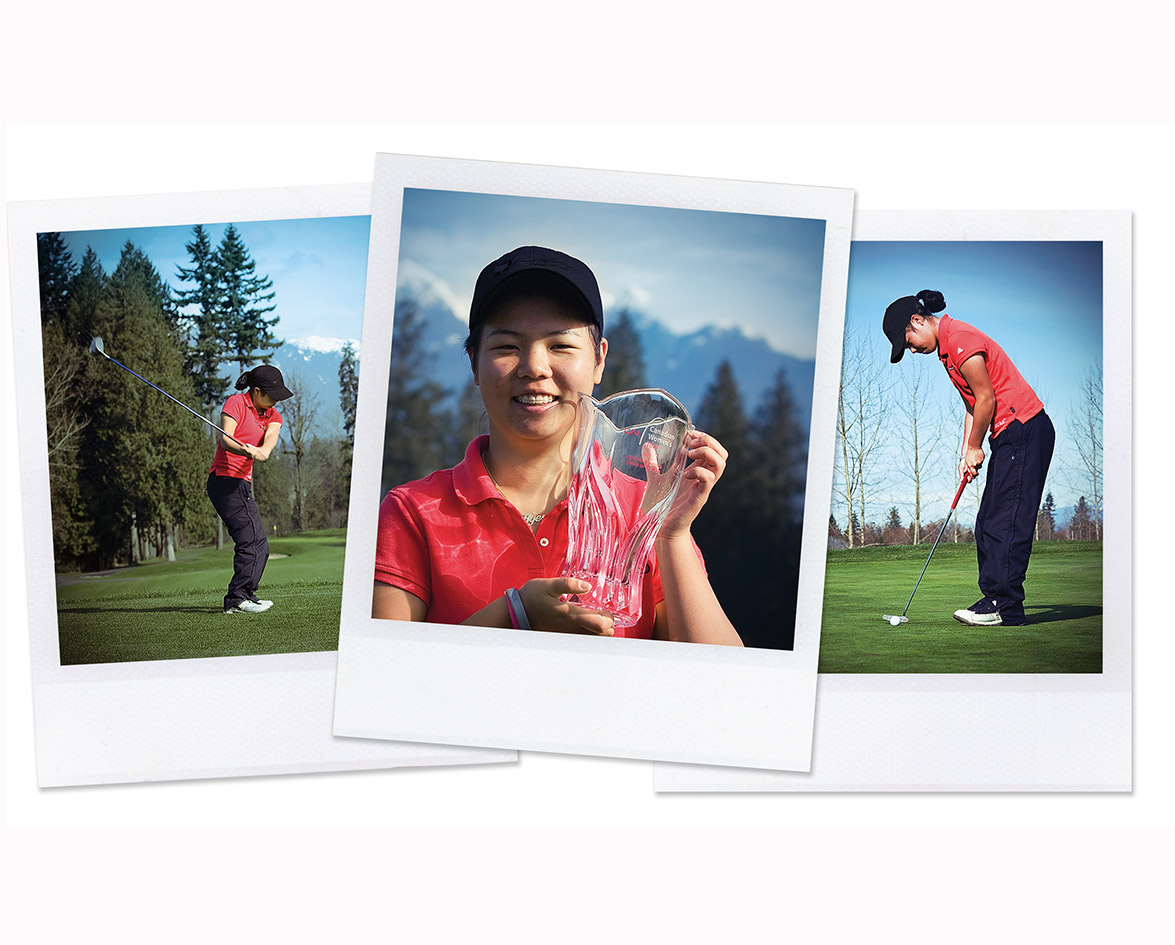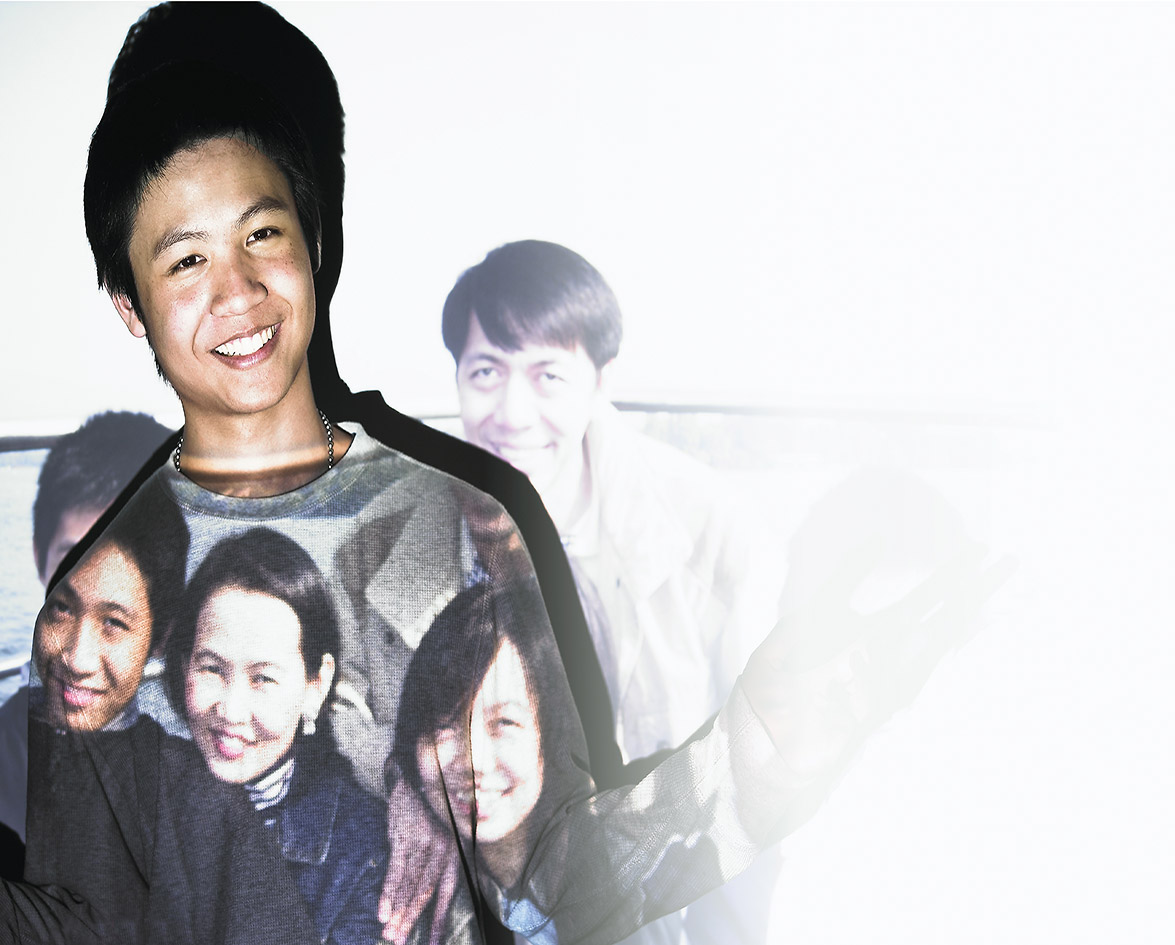On May 23rd, 2008, at the Richmond Country Club, Sue Kim looked up at the 15th hole scoreboard. She was one off the leaders. After the 17th hole, the leaders were in the clubhouse with a one shot lead and Kim knew she would have to birdie the final hole to force a playoff. Pressure crept in on the 18th tee. Kim’s playing partner, Jessica Potter, offered Kim her lucky golf club armadillo head-cover to ease the tension. Kim played the hole perfectly and made a 15-foot putt for the birdie. On the first playoff hole Kim made another long birdie putt to tie the leader Sarah Tiller and eliminate her other rival Susan Choi. Tiller and Kim made par on the next hole. The pair moved on to the 18th hole, now Kim’s favourite hole in the world. Tiller missed her chip shot. Kim stood over her ball and thought, “I have nothing to lose.” The gallery silently watched her ball roll towards the hole. The putt was perfect and she made the birdie. The gallery erupted.
Making Her Mark
Kim had just made history; she was the first amateur to win an event in Canada’s professional women’s CN Tour. Kim’s first thought after winning was, “Yay! Can I go now? I have to catch a flight.” Sue Kim is only 17, but this past summer she proved she is Canada’s most promising woman golfer. Not only did she win at Richmond, she won the next CN Tour event in London, Ontario, and the British Columbia Junior Girls Championship. At season’s end the CN Tour awarded her Player of the Year, Amateur of the Year, and the Order of Merit. At the Kim home in Langley, British Columbia, two ceiling high bookcases flank the fireplace. Trophies cram the shelves in a jaw-dropping display of success. The golf game may come easy to the petite Korean-Canadian, but she has sacrificed, faced pressures and overcome disappointments to get to where she stands today.
The Early Years
Kim first picked up a golf club at age eight. While living in Seoul, South Korea, her parents did not want to hire a babysitter so she went with them to the driving range. Kim quickly started to play tournaments but the pressure was intense. “I got sick of it. There is a lot of pressure in Korea playing in tournaments. They don’t talk at all. It’s kind of scary,” she recalls. She quit two years later. “[My parents] are really hard on me. That’s why I get frustrated sometimes and that’s why I quit for a year,” she confesses. Speaking in Korean her mother explains, “I pushed Sue because she had talent even though she didn’t practice much.” Her mother’s foresight would be rewarded when Kim started to play again. Kim gave golf another chance in 2002 at age 11, when her family moved to Vancouver. Canadian tournaments were enjoyable for her because playing partners were friendlier. “Here you’re friends; you just talk all the time. It’s relaxing.”
Balancing School And Golf
Golf became her passion and started to take up all of her free time. She has such a full schedule of school, daily practice at the driving range and regular tournaments that she has little time to socialize with friends. Her only socializing is during her weekend golf at Redwoods Golf Course in Langley with her friends Jess, Pam and Steph. These are sacrifices she feels are necessary to achieve her goal of making the LPGA tour. Kim’s 2008 summer was hectic. She was a member of the Canadian Women’s Amateur team, and the practice sessions and travel maxed out her schedule. “Honestly I was home twice.Two days. For packing.” Many teens can only dream of summers full of foreign travel, but for her it can be a grind. “You just get sick of hotel life. You just want to be home in your own bed,” she confesses. Because she is playing tournaments everywhere she goes, the only time to rest is during flights. Unlike most teenagers, by the end of every summer she looks forward to the start of school.

Kim found friendship and role models of various ages and experience on the Canadian Women’s Amateur team. Teammate Mary-Anne Lapointe, a Canadian Golf Hall of Fame inductee, took care of Kim on the road. “I like to be babied,” she laughs. She looked up to teammate Laura Matthews ever since they played at the 2005 Canadian Amateur, which Matthews won. “It’s kind of ironic because I was like, ‘She’s a great player. I wish I was like her. I’m never going to meet her in life.’ And then I just got to know her so well,” Kim exclaims. Matthews was supposed to be Kim’s future coach at Oklahoma State University but, much to Kim’s disappointment, she resigned in October 2008 for unknown reasons. “Nobody was going to take care of me like she was going to take care of me,” she sighs. She had high expectations for Oklahoma State University, “We were going to be the best team,” she boasts.
Choosing A University
Two weeks after Matthews resigned, Kim had to commit to another school. When the recruiting process had begun a year earlier she was excited. “You get all this email and mail. When you first get it you’re happy because people are interested in you. They know that you’re alive,” she says. After the initial novelty had worn off there were endless forms and questionnaires to fill out. She toured the schools that she seriously considered, where coaches promoted the benefits of their program. All of the trips to the driving range, the hours on the putting green and physical conditioning had earned her full scholarship offers but Kim was cautious. “Some of the coaches are so fake. They tell you all these lies,” she says. Leila Chartrand, a University of Southern California alumnus and golf team captain, understands how Kim feels. “They definitely paint an amazingly bright picture,” she says. Kim was also concerned with some coaches’ idea of team success meaning sacrificing a player’s individual development. Chartrand agrees, “Every coach has one thing in mind: They want to get the most out of you in those four years.”
Kim eventually committed to the University of Denver, a small private institution of 5,000 students where she plans to study business. “I think graduating from college and getting a degree will help me a lot with a fall back,” she says. Phil Jonas, who coached Kim in 2008, believes her game is not far off her dream of the LPGA. “Right now she’s fairly close. She probably just lacks a little bit of power because she’s quite small,” he says. Chartrand feels that a player of Kim’s ability will have to decide if she is regressing by staying in college. “I’d be very surprised if Sue Kim stays all four years,” Chartrand says. Jonas warns, “If you’re not doing well at school that puts a lot of pressure on your golf.” Kim will have to balance her academics and golf game if she hopes to earn her degree and experience more LPGA events like her trip to the Canadian Open in 2008.

What’s Next For Kim
The summer of 2009 looks to be another busy one for Kim. Selected again for the Canadian National Amateur Team, she will travel to more foreign places, and sleep in hotels far away from her family and friends. By the end of the summer, she will probably be sick of the grind. In September, she will move to Denver and begin the next step in her journey. When asked if the sacrifices and hard work have been worth it, Kim says, “Yes. I’m living for the future. I’m living a life of meaning.” If the past is any indication, odds are when Sue Kim looks up at future scoreboards, her name will be on top.











